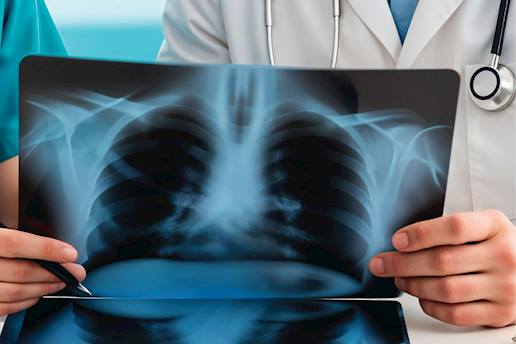
One of the challenges in managing lung cancer lies in its often silent progression. In most cases, symptoms do not appear early. Patients may go long periods without noticeable changes in their health until the disease begins to directly affect lung function. At that point, symptoms may include persistent coughing, shortness of breath, or chest pain. In more advanced cases, weight loss or coughing up blood may occur, prompting the need for urgent medical evaluation.
Smoking is the leading cause of lung cancer, accounting for the vast majority of diagnosed cases—whether through direct use or secondhand exposure. However, this does not mean non-smokers are free from risk. Many cases have been reported in individuals with no history of smoking, indicating that environmental, occupational, and genetic factors may also play a role. This diversity in causes highlights the importance of awareness and moves the discussion beyond personal behavior to broader health and environmental contexts.
Diagnosing lung cancer requires advanced medical imaging and pathology techniques to confirm the presence of a tumor and identify its type and stage. This process typically begins with a medical history and physical examination, followed by imaging studies such as a CT scan or chest X-ray. In some cases, a biopsy may be necessary to analyze tissue samples. Each step in the diagnostic journey contributes to developing a precise and personalized treatment plan.
The treatment plan for lung cancer depends on the tumor type, stage, and the patient's overall condition. Key treatment modalities include:
Almana Hospitals offer a comprehensive and advanced approach to lung cancer diagnosis and treatment, aligned with the latest medical advancements. One of the standout services is targeted therapy, which involves genetic testing of tumors to identify precise treatment options that attack cancer cells without damaging healthy tissue. Additionally, the hospital provides access to immunotherapy—one of the most innovative treatments available—helping the immune system recognize and destroy cancer cells effectively.
In diagnostics and follow-up, Almana uses state-of-the-art imaging tools like PET/CT scans to accurately stage the disease and monitor treatment response. Each case is reviewed by a multidisciplinary tumor board comprising specialists in oncology, pulmonology, radiology, radiation therapy, and nutrition. This ensures that each patient receives a highly individualized and evidence-based treatment strategy.
Beyond clinical treatment, the hospital also delivers comprehensive supportive care including psychological support, nutritional guidance, and symptom management, with a strong emphasis on enhancing the patient’s quality of life throughout the treatment journey.
Studies confirm that identifying lung cancer in its early stages significantly improves treatment outcomes. Low-dose CT scans are particularly effective in detecting small changes in lung tissue before symptoms arise. Early detection is a powerful tool—especially for individuals with known risk factors—and offers a greater chance for recovery.
There is no guaranteed way to completely prevent lung cancer, but reducing exposure to risk factors can make a significant difference. Avoiding smoking, limiting exposure to carcinogens in occupational settings, and improving indoor air quality are all essential steps. Regular screenings are also critical for individuals with a family history or those working in high-risk professions. Ultimately, prevention is rooted in informed choices and timely medical action.